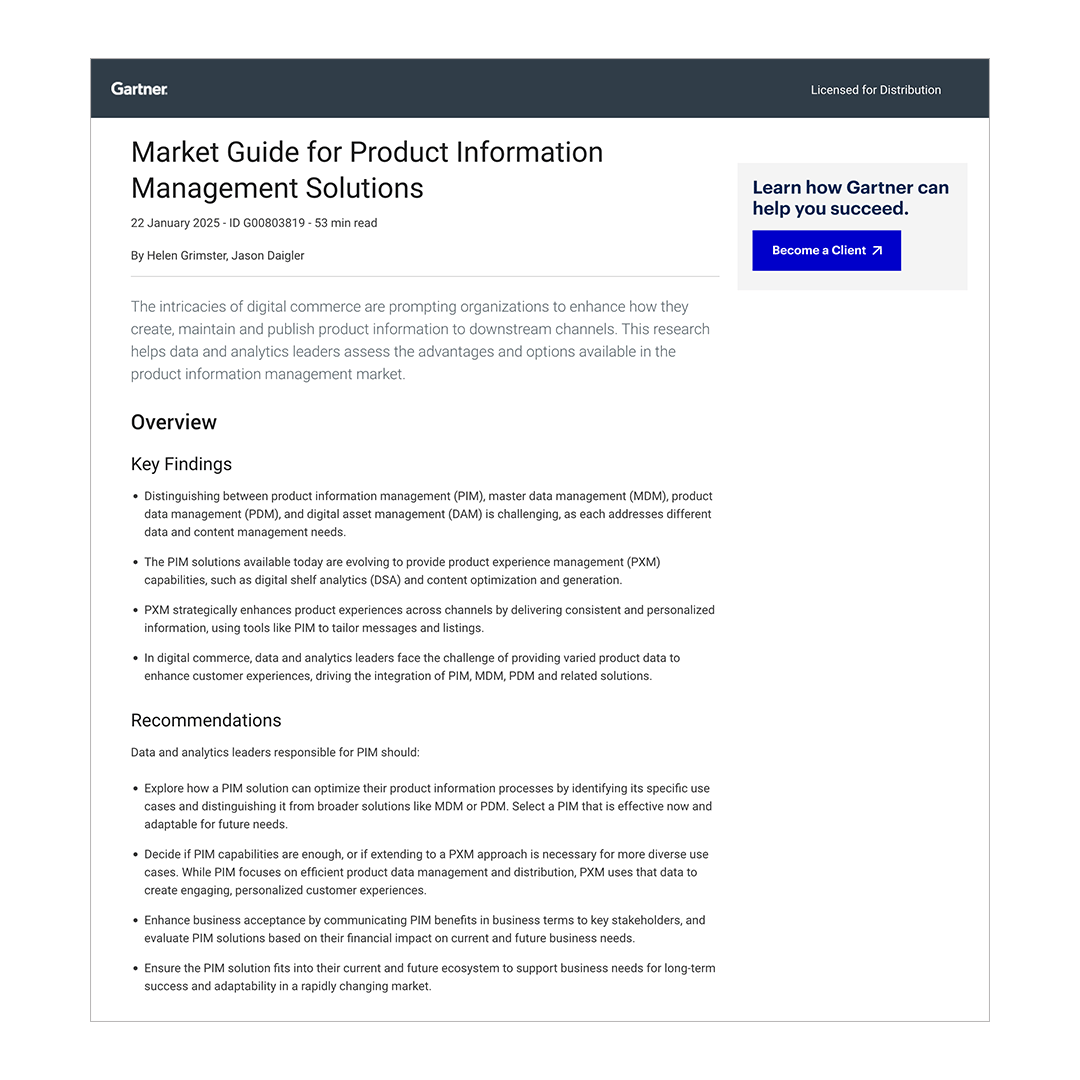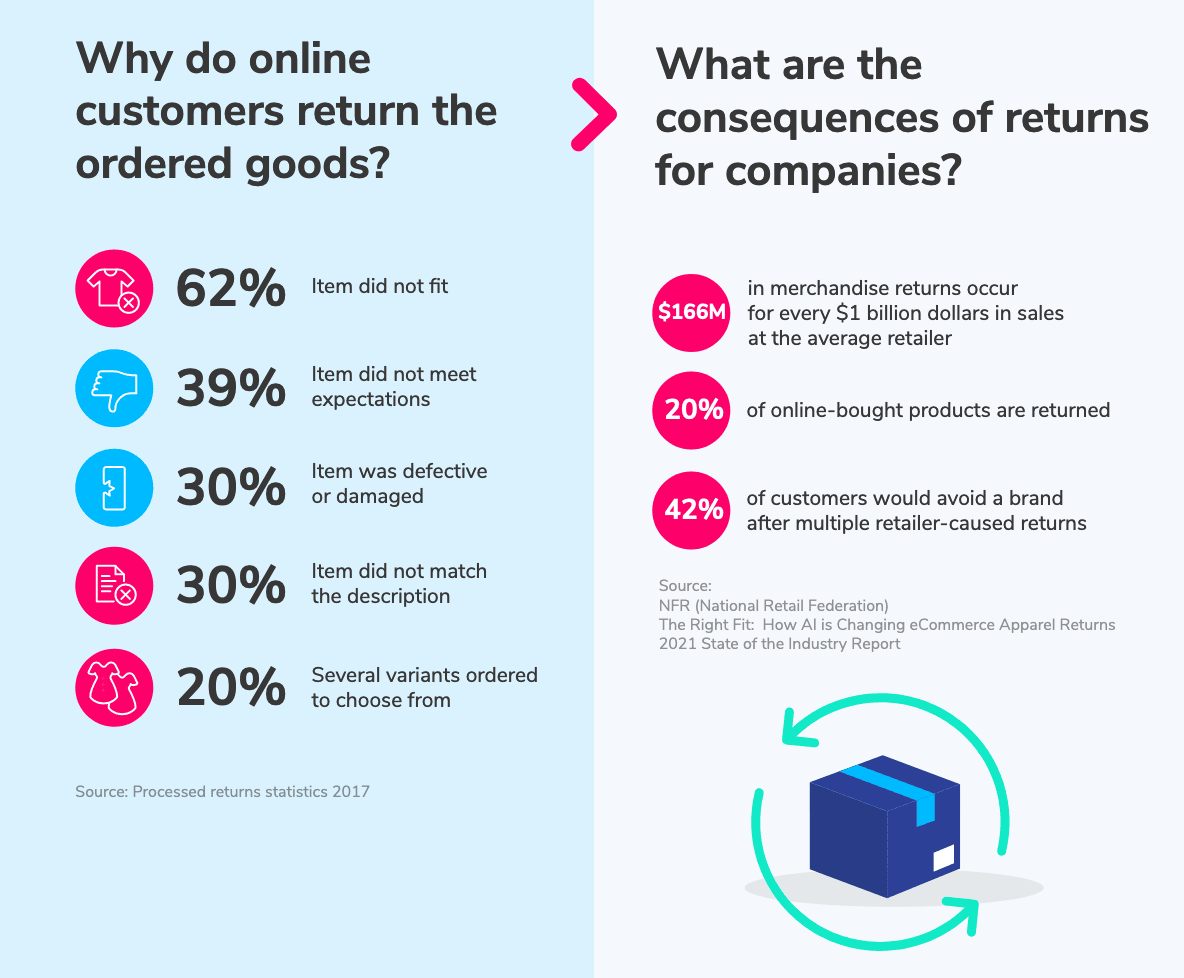How can hurdles in product experience management be overcome?
Understanding your customers is crucial for successful product experience management. However, manufacturers and retailers have repeatedly seen that this is more challenging to put into practice. That's why we'll now show you what challenges you can expect in product experience management and how to deal with them.
What it means to sell in a genuinely customer-centric way
Customer centricity is a prerequisite for positive product experiences and successful shopping experiences. But why do companies still fail so often?
Customer requirements are misunderstood
Many manufacturers and retailers are only now realizing how much their customers are changing due to digitalization. Target groups are changing in terms of their online preferences and in more ways than ever. Sustainability and fair trade are just as popular with consumers as regionalism, but these trends vary depending on the industry. So, how is it possible to keep track of them all? This is precisely where many companies fail. They have a limited understanding or even the wrong idea of what makes their customers tick. But that's not the way product experience management can succeed.
The information must always be correctly available everywhere
Especially companies that have long sold mainly through catalogs and price lists must be aware that digitalization has prompted their customers to get all the information they need online. If product content is not available, or if it's incorrect or inconsistent, customer churn is almost inevitable. The always-on mentality, the increasing demand for up-to-date information, and channel diversity — the keyword here is omnichannel — are putting companies under increasing pressure. Now more than ever, they must keep an eye on all touchpoints and constantly maintain their database.
Online information is not enough — digital commerce is the future
Today, more than a website and online store is needed for the digital customer. That's why digital commerce must be a top priority. It encompasses numerous touchpoints such as marketing, sales, service, R&D, and the further development and marketing of products via platforms such as marketplaces and social networks. Without the right approach, integrating all channels into a holistic product experience and establishing frictionless sales processes can bring chaos or setbacks. This is why, in many companies, customer-centric digital commerce is still in its early stages.
Flexible structures and agile mindsets are in demand
Digitalization has also accelerated the pace of development, shortened product life cycles, and increased the need for manufacturers and retailers to be responsive. Creating the necessary flexibility to react to changes agilely is challenging for many companies — from outdated technologies to rigid internal processes and fixed mindsets. Under these conditions, product experience management that truly focuses on the customer cannot be implemented.
Internal commitment to customer-centricity is lacking
With all the challenges already mentioned, companies have much room for improvement. However, it would be best not to underestimate the obstacles and resistance from within your ranks. After all, changes — whether in product experience management, digital commerce, or D2C — are rarely enthusiastically accepted by employees. This requires change management and, above all, solutions that make the customer happy and the employees' work easier.
Prevention is better than cure — with PIM
PXM is not a successful side project that you complete and move on to new things. It's a never-ending task for a company. A PIM system cannot be a preventive cure-all, but it can help avoid or eliminate specific challenges.
Customer requirements can be better understood and served.
A PIM system enables you to better understand customers by providing a central platform where product data and customer information converge. You gain comprehensive insight into customer wants and preferences by capturing customer interactions with product content across multiple channels. This allows you to create personalized product offerings and adapt to the changing needs of your customers.
The highest possible data quality — anytime and anywhere — is guaranteed by a PIM system.
Product information management ensures that product content is always correct and consistent. By centrally managing all product data in a cloud-based PIM system, you can ensure that all sales channels have the latest and most accurate information. This helps avoid customer confusion and builds brand trust — a key element in product experience management.
PIM is the basis for digital commerce.
Manufacturers and retailers can market and sell their products through various digital channels. A PIM seamlessly collects product-related data from different sources, categorizes it, and delivers it to channels like websites, marketplaces, catalogs, and marketing feeds. By centrally managing all product data, you can create a seamless buying experience with speed, simplicity, and convenience.
Agility and flexibility need a technological foundation.
PIM allows you to be flexible with your product data. This flexibility means you can tailor the information to different audiences and channels. By automating processes and centrally managing product information, you can react faster to changes, achieve a shorter time-to-market — and scale at any time as channels or requirements grow.
Employees may also benefit from product experience management.
Although the customer is the focus, strengthening customer focus goes hand-in-hand with benefits that employees also feel. A PIM system can help cut internal costs, make processes more efficient, and reduce employees' workload. They can then devote time to other tasks. Central data management and analysis also enable companies to make data-based decisions, which means more sales and success for the entire company.
The ROX as a benchmark for product experience management
Despite their dedication to customers, what matters most to manufacturers and retailers is whether their efforts in delivering an optimal product experience, a convenient shopping experience, and a consistently positive customer experience yield results. Above all, the question is whether the PIM system as the basis for product experience management will pay off quickly. The PIM system's return on investment (ROI) can be easily determined and increased to maximise your success.







-rox-star-r01.gif?width=1140&height=760&name=product-animation-quiz-form-testing-(rox-quiz)-rox-star-r01.gif)
